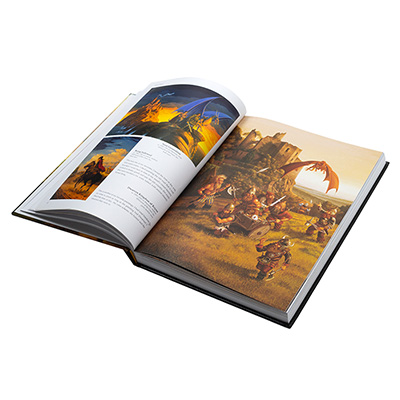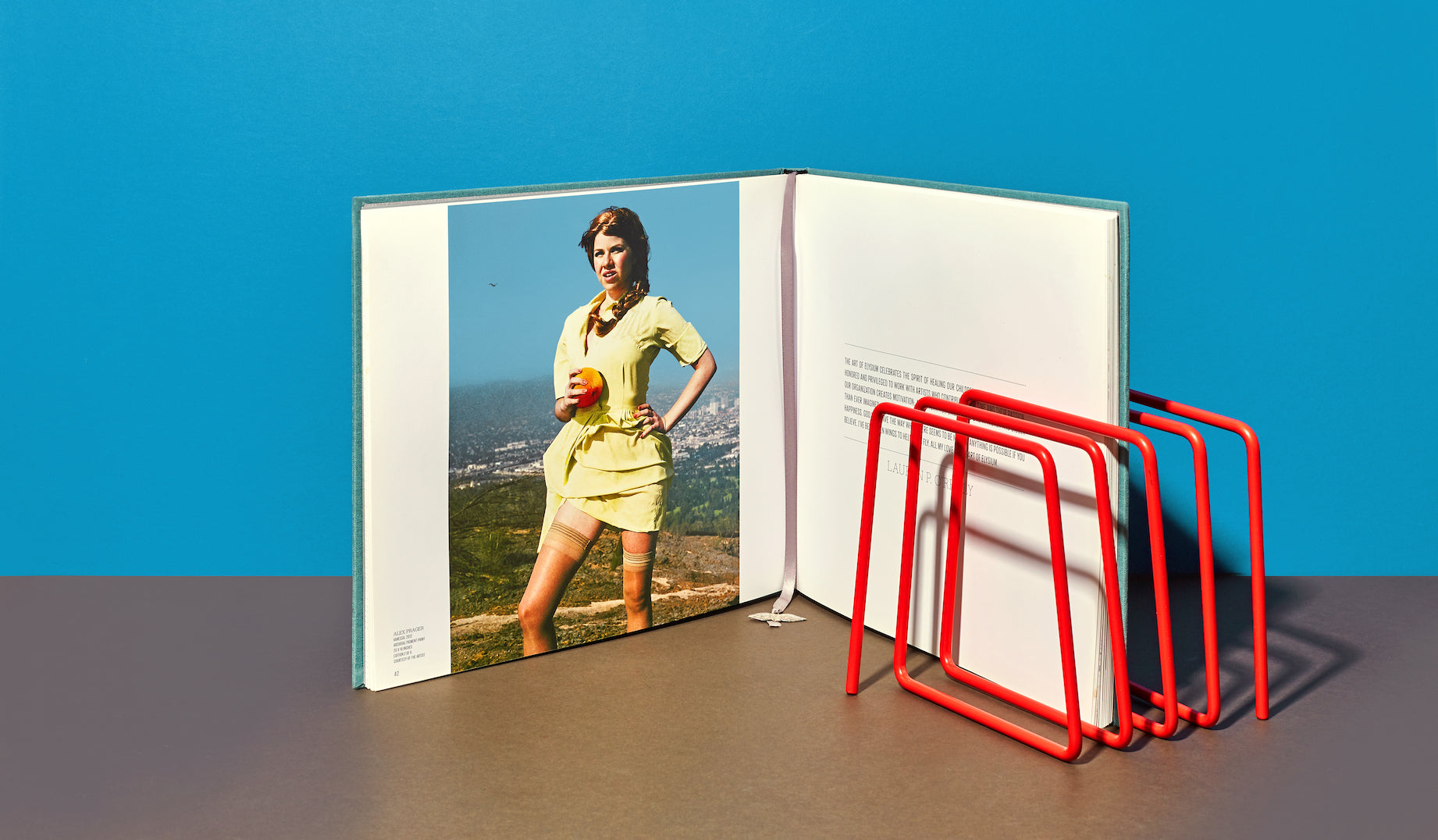How to Prepare Press-Quality Files for an art book Project
How to Prepare Press-Quality Files for an art book Project
Blog Article
Comprehending the Refine Behind Premium Art Book Printing for Art Enthusiasts
When it pertains to premium art book printing, understanding the ins and outs of the procedure can boost your gratitude for the last product. You might not realize how vital paper choice and ink selections are to the vibrancy of artwork. Each component plays a significant function in accomplishing the wanted result. As you explore the various parts of art book printing, you'll uncover understandings that can transform your perspective on art conservation and presentation.
The Significance of Paper Selection in Art Book Printing
When it pertains to art book printing, the selection of paper can make or break the end product. You want your art work to shine, and the best paper improves color vibrancy and information. Think about aspects like weight, texture, and surface; these aspects substantially influence just how visitors view your work.
As an example, a much heavier stock conveys quality and resilience, while a distinctive finish can include deepness to photos. Smooth paper is superb for in-depth reproductions, enabling fine lines and refined shades to appear crisp.
Do not forget the paper's illumination; a brighter sheet can help shades pop, making your art more appealing. You'll also wish to think of how the paper communicates with inks and whether it can take care of the printing procedure without warping or bleed-through. Inevitably, choosing the appropriate paper establishes the phase for your art, ensuring it records the audience's attention equally as you pictured.
Choosing the Right Inks for Vibrant Recreations
Selecting the right inks is simply as essential as selecting high quality paper to accomplish dynamic reproductions in your art book. When you're printing artwork, you want colors that stand out and properly stand for the initial piece. Go with inks with a high pigment concentration; these often tend to produce richer and more saturated shades.
You could think about using archival inks, which stand up to fading gradually, guaranteeing your art book stays as striking as the day it was published. If you're collaborating with photographs or electronically produced art, pigment-based inks can supply a bigger color range, enhancing detail and deepness.
Do not forget the surface! Matte and glossy inks can dramatically modify the look of your artwork, so assume regarding the appearance you're intending to attain - art book. Eventually, the appropriate ink choice enhances your paper option, producing a spectacular aesthetic experience for your viewers
The Role of Color Administration in Print Quality
Shade monitoring plays an essential function in attaining high print top quality for your art book. It assures that the colors you see on your display convert accurately to the printed page. Without reliable color administration, your dynamic art work may show up plain or distorted, threatening your imaginative vision.
To begin, adjust your monitor on a regular basis. This step helps maintain constant shade depiction. Next off, utilize shade profiles customized for your printer and paper type. These profiles assist the printer in duplicating colors precisely, reducing inconsistencies in between electronic and printed variations.
When you prepare your files, think about using a shade room like Adobe RGB or CMYK, relying on your printer's requirements. Always proof your job, as well; an examination print can expose any prospective shade problems before the last run. By prioritizing color management, you secure the honesty of your art, guaranteeing your target market experiences it as you planned.

Comprehending Different Binding Methods
Achieving the perfect look for your art book surpasses shade monitoring; binding strategies likewise play a substantial function in its general presentation and longevity. You have a number of choices to examine, each with its own one-of-a-kind features.
If you're going for a professional feeling, instance binding provides a durable alternative with a hard cover, excellent for showcasing your art work. On the various other hand, best binding provides a versatile back while keeping prices down, making it a prominent option for softcover publications.
Spiral binding allows your art book to lay level, which is terrific for displaying pictures without blockage. Saddle stitching is perfect for smaller booklets, offering a clean coating without the bulk.
Ultimately, the binding strategy you select ought to reflect your imaginative vision and exactly how you want viewers to involve with your work. Ensure to consider these choices thoroughly official website to accomplish the best end result for your job.
The Impact of Publish Size and Format on Presentation
While the selection of print size and design may seem secondary to material, they considerably affect just how your art work is regarded. The measurements of your prints can either improve or reduce the effect of your pieces. Bigger prints can draw customers in, allowing them to appreciate complex details, while smaller styles may call for even more intimate interaction.

Conservation Techniques for Resilient Art Books
To ensure your art books stand the examination of time, it's crucial to implement effective preservation techniques. Use acid-free storage boxes or protective sleeves to protect them from dust and physical damage.
When managing your publications, constantly clean your hands or wear cotton gloves to prevent oils and dust transferring onto the pages. Stay clear of bending or wrinkling the spines; rather, make use of book sustains when presenting them.
For added defense, consider investing in archival-quality materials for any repair services or enhancements. Routinely inspect your my sources collection for signs of wear or damages, resolving problems quickly. By complying with these easy methods, you can ensure your art books remain vibrant and available for years to come, preserving their appeal and value for future generations.
Working together With Printers for Ideal Outcomes
When you prepare to publish your art book, selecting the right printer is vital to accomplishing your vision. Clear communication about your assumptions and demands will certainly help assure that both you and the printer get on the exact same page. Allow's discover just how to make this collaboration as smooth and effective as feasible.
Picking the Right Printer

Effective Communication Methods
Efficient interaction is important for transforming your art book vision into reality, particularly when collaborating with printers. art book. Begin by plainly detailing your task's objectives, including design elements, preferred materials, and any kind of details printing methods. Don't hesitate to share your motivations and references; this assists the printer understand your visual
Be open to responses, as printers often have important understandings that can boost your job. This collaboration will certainly guarantee that your art book fulfills your assumptions and beams in its final form.
Regularly Asked Inquiries
What Are Usual Errors to Prevent in Art Book Printing?
When printing your art book, stay clear of typical blunders like bad resolution pictures, wrong color accounts, and disregarding web page layout. Do not neglect to proofread and ascertain details to validate your end product fulfills your expectations.
How Does Digital Printing Differ From Traditional Printing Approaches?
Digital printing makes use of electronic files to develop prints straight, enabling quicker turn-around and customization. On the other hand, conventional methods entail physical plates, which can be taxing and much less flexible for little runs or unique layouts.
What Is the Typical Turnaround Time for Art Book Printing?
The regular turn-around time for art book printing varies, yet you can anticipate it to take anywhere from a couple of weeks to a number of months. Aspects like intricacy, amount, and printing technique all affect this timeline.
Can I Print a Minimal Edition Art Book Financially?
You can print a limited edition art book financially by picking cost-effective products, maximizing print runs, and using digital printing choices. Cautious planning and budgeting will assist you accomplish high quality without spending too much.
What Are the Ecological Considerations in Art Book Printing?
When thinking about art book printing, you should think concerning eco-friendly materials, lasting inks, and energy-efficient procedures (art book). Picking neighborhood printers can additionally lower your carbon footprint, making your job both attractive and environmentally additional resources liable
Report this page